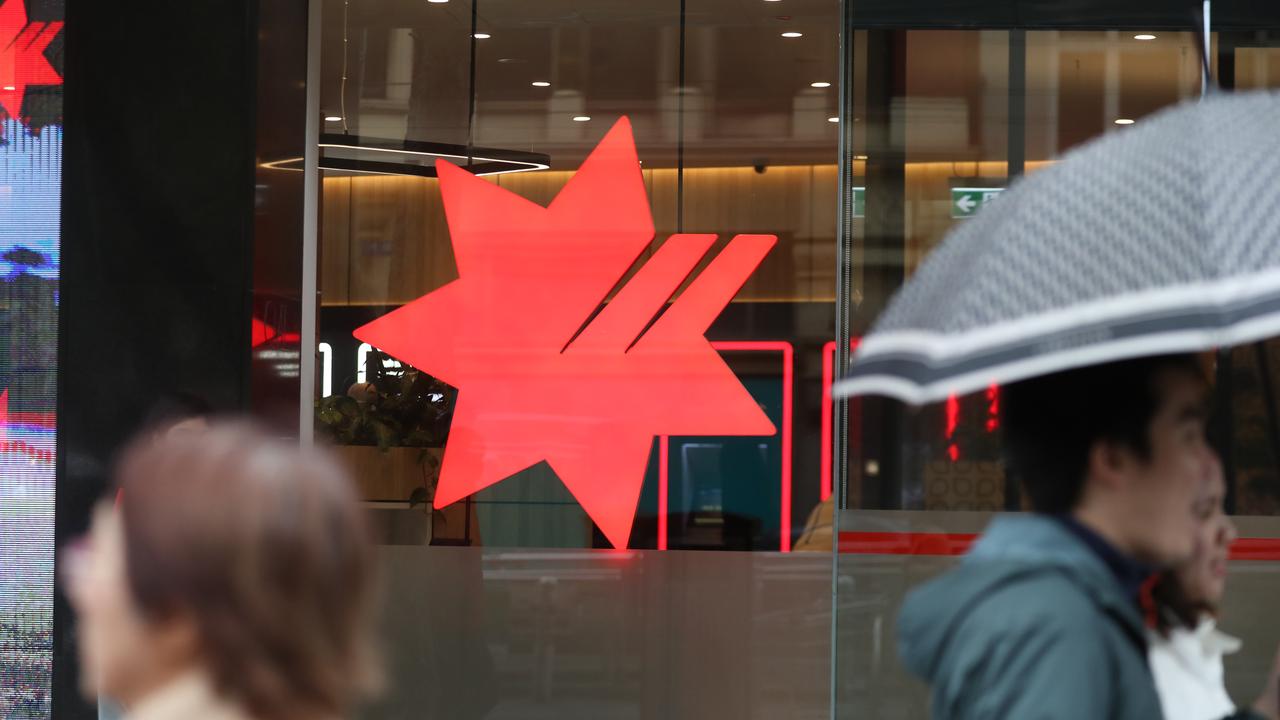Reaction to RBA’s 0.25% interest rate rise from Australia’s biggest four banks
Three out of four Australia’s largest banks have reacted to the interest rate rise, and it’s not good news for homeowners.

Three out of four Australia’s largest banks have reacted to the interest rate rise, joining NAB in unsurprisingly opting to pass on the full hike to its customers.
On Tuesday, the RBA lifted interest rates by 25 basis points. That brought the cash rate from 2.6 per cent to 2.85 per cent.
It marked the seventh consecutive month where interest rates were increased, up from a record low of 0.1 per cent which had dominated throughout the pandemic.
On Wednesday, the Commonwealth Bank announced it would lift its home loan variable interest rates by 0.25 per cent from 11 November.
It followed NAB, who became the first bank to pass on the rise less than two hours after the RBA lifted rates.
Macquarie Bank will also increase variable home loan reference rates by 0.25 per cent per annum, effective 16 November 2022.
And on Wednesday afternoon, Westpac also announced its home loan variable interest rates will increase in line with the new changes.
“We know that many of our customers are looking at their finances to help manage changes to their household budgets,” said Chris de Bruin, Westpac Chief Executive Consumer & Business Banking.
“We’re increasing the interest rates on a range of deposit products including our flagship Westpac Life account where most customers will receive a rate of 2.60 per cent p.a.”
Angus Sullivan, group executive for retail banking, at CBA said the bank was looking at other ways it can help support customers mitigate cost of living pressures, including launching a hub to help customers keep track of their savings, spending, bills and home loan features.
“We understand the rapidly changing rate environment may raise questions for some of our customers and we are here to help them,” he added.
NAB also said it was passing on the full 0.25 rate increase, which would come into effect next Friday, on November 11.
That’s a bad thing for customers with home loan but good for anyone with a savings account or a term deposit, which will now enjoy a higher return from that date.
How can inflation cause rising interest rates? Read Compare Money's guide >

The other big banks – ANZ and Westpac – have yet to break their silence over the RBA announcement.
However, in the past, all of the big banks have passed the cost of the rate rise onto customers.
NAB said that last month, it increased savings products by 0.25 per cent in response to the rate rise and its iSaver intro rate rose by 0.70 per cent, while its Term Deposit rates increased by up to 1.5 per cent.
Since the interest rate first started to increase in May, NAB said it had made more than 40 changes to its savings accounts.
Currently, a homeowner making principal and interest loan repayments at NAB are forking out a 5.95 per cent rate per annum.
For Aussies who are struggling to make their mortgage – reportedly one in four, according to a recent Finder survey, they still have some options.
NAB Group Executive for Personal Banking Rachel Slade said: “For those who are finding the increasing interest rates a challenge, banks have a critical role to provide support.”

RBA Governor Philip Lowe said they had decided to up the rate by 25 basis points because inflation is forecast to hit eight per cent by the end of the year.
“A further increase in inflation is expected over the months ahead, with inflation now forecast to peak at around 8 per cent later this year,” he wrote in a statement.
“The Bank’s central forecast is for CPI inflation to be around 4¾ per cent over 2023 and a little above 3 per cent over 2024.”
He warned this wouldn’t be the last interest rate hike.
“The Board has increased interest rates materially since May,” Mr Lower continued.
“This has been necessary to establish a more sustainable balance of demand and supply in the Australian economy to help return inflation to target.
“The Board expects to increase interest rates further over the period ahead. It is closely monitoring the global economy, household spending and wage and price-setting behaviour.”
Inflation currently sits at 7.3 per cent, according to the latest report.
Graham Cooke, head of consumer research at Finder, acknowledged these were trying times.
“This seventh consecutive rate hike will be a bitter pill to swallow for many,” he said.
“The current series of rate hikes has added almost $11,000 to the annual cost of a $500,000 mortgage.”
Although Tuesday’s announcement will add an extra several hundred onto monthly home loan repayments, it will lead to thousands of wasted dollars in the long term.
Compare the Market found that a $500,000 mortgage will have to pay an extra $76 per month after Tuesday’s increase.
However, over the life of the loan, that amounts to an extra $27,000 being back to the bank in interest.
In a similar vein, an Aussie on a $1 million loan will have to fork out a further $152 to keep their loan in check.
But that adds up to an eye-watering $54,000 over the course of the loan.




